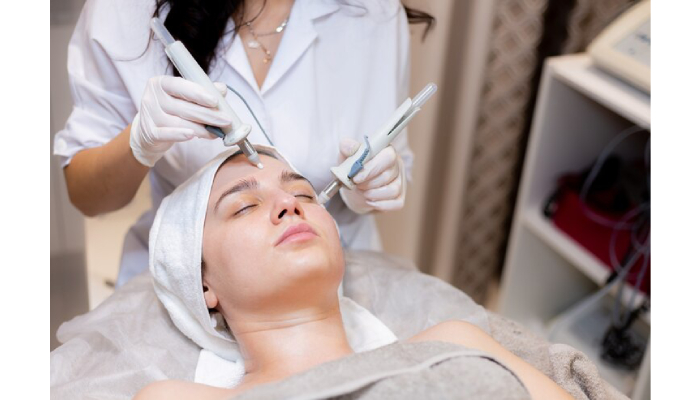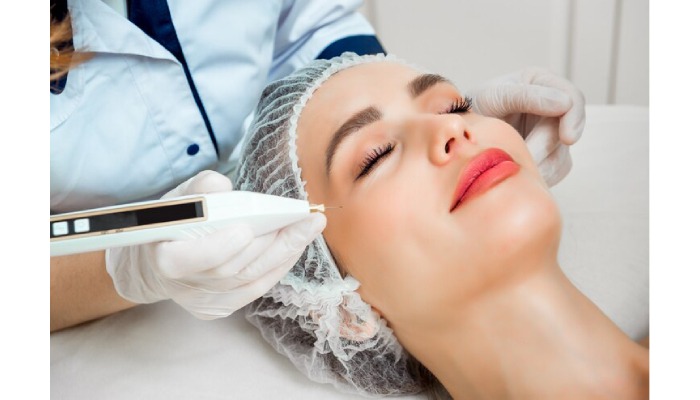
Preparing for a procedure at an aesthetics clinic involves several important steps to ensure safety and good results. First, it’s smart to research the treatment options, like Botox or laser therapy, so you know what to expect and can discuss your goals during a consultation. Choose a reputable clinic with qualified practitioners by checking reviews and credentials. Before your appointment, avoid blood-thinning medications and alcohol to reduce bruising risks, and skip sun exposure, especially if you’re getting peels or lasers. On the day, arrive with clean skin and well-rested. Also, prepare mentally by planning for any possible downtime and understanding aftercare instructions for smooth recovery.
Research Your Treatment Options Thoroughly
Before committing to any Atlanta Aesthetics Clinic procedure, take time to understand the variety of treatments available, such as Botox, dermal fillers, chemical peels, laser treatments, and microneedling. Each option targets different skin concerns and works in unique ways. For example, Botox relaxes muscles to reduce wrinkles, while chemical peels remove damaged skin layers to improve texture. Knowing what results to expect and how long they last helps set realistic goals. It’s also important to learn about potential side effects and risks, like bruising or sensitivity, and whether multiple sessions or ongoing maintenance are necessary. Reviewing before and after photos from trusted sources can give a clear idea of achievable outcomes. Look for clinical studies or scientific evidence supporting the treatment’s effectiveness, which can often be found on reputable medical or dermatology websites. Gathering information from professional forums and expert resources adds perspective.

Book a Detailed Consultation
Scheduling a detailed consultation with a qualified practitioner is a crucial first step before any aesthetic procedure. During this session, be open about your goals and concerns so the practitioner can tailor the treatment to your needs. Make sure to share your full medical history, including allergies, current medications, and any previous cosmetic treatments, as these details affect safety and outcomes. Discuss your lifestyle habits such as smoking, alcohol use, and skincare routines, since these can impact healing and results. Use the consultation to ask about the exact steps involved in the procedure, what you should expect on the day, and available pain management options, including whether sedation is necessary. Clarify the expected recovery time, possible side effects, and signs of complications to watch for after treatment. It’s also important to go over costs, payment plans, and whether follow-up sessions are included. Don’t hesitate to inquire about the practitioner’s experience and credentials to ensure you’re in capable hands. Understanding the clinic’s policies on cancellations, rescheduling, and refunds will help avoid surprises later. Finally, confirm you will receive written aftercare instructions and emergency contact information to support you during recovery. A thorough consultation builds trust and sets clear expectations, making your experience smoother and safer.
Select a Qualified Clinic and Practitioner
Choosing the right clinic and practitioner is a crucial step before any aesthetic procedure. Start by verifying that the clinic holds proper licensing and follows recognized health and safety standards. A visit or a virtual tour can help you assess cleanliness and hygiene, which are key indicators of a professional environment. Confirm that the practitioner is certified and specially trained in the procedure you want, as proper expertise greatly affects results and safety. Patient reviews are valuable for understanding real experiences, so focus on feedback about treatment outcomes, staff professionalism, and the clinic atmosphere. Ensure the clinic uses FDA-approved or CE-marked products and medical-grade equipment to guarantee quality and reduce risks. It’s also beneficial if the clinic offers a range of treatments tailored to different skin types and needs, showing their ability to customize care. Look for practitioners who keep up with education and industry advancements, which reflects dedication to the latest techniques and safety measures. Be cautious of clinics that promise unrealistic results or offer prices that seem too low, they might cut corners. Finally, pick a clinic where you feel comfortable and confident in the staff’s communication, as trust and clear dialogue are essential for a smooth treatment experience. Don’t hesitate to ask about emergency protocols to ensure you’re covered if any unexpected reactions occur.
Follow Medication and Supplement Guidelines
Before your procedure, it’s important to avoid blood-thinning medications such as aspirin and ibuprofen for at least one to two weeks, unless your doctor specifically prescribes them. These medications can increase the risk of bruising and bleeding during and after your treatment. Similarly, supplements like fish oil, vitamin E, ginkgo biloba, and other natural blood thinners should be paused as advised by your practitioner. Be sure to inform your provider about every medication and supplement you take, including herbal remedies or over-the-counter drugs, since some may affect your clotting ability and impact your procedure’s safety. If you are on prescribed anticoagulants or treatments for chronic conditions, discuss these thoroughly before moving forward. Never stop or adjust prescribed medications on your own without consulting your healthcare provider. On the day of your treatment, follow any specific instructions regarding medications, such as avoiding painkillers that thin the blood. Additionally, some procedures, like laser treatments, might require pre-treatment medications such as antiviral drugs, ask your practitioner if this applies to you. Keep a detailed list of all substances you have paused and note when you plan to resume them after your procedure. If you accidentally take any restricted medication before your appointment, notify the clinic immediately to avoid complications.
Adjust Your Lifestyle Before the Procedure
Making thoughtful lifestyle changes before your procedure can improve your treatment experience and results. Avoid alcohol for 24 to 48 hours before your appointment, as it can dehydrate your body and increase the chance of bruising. Similarly, limit caffeine intake to prevent heightened anxiety and a rapid heartbeat, which might interfere with your comfort during treatment. If you smoke, try to stop at least a week in advance to boost blood circulation and promote better healing after the procedure. Staying well-hydrated by increasing your water intake in the days leading up to your appointment helps keep your skin healthy and supple. Eating a balanced diet rich in vitamins and minerals supports skin repair and overall wellness. It’s also wise to avoid strenuous exercise the day before and after your procedure to reduce swelling and inflammation. Prioritize quality sleep to ensure your body is rested and ready to recover effectively. Managing stress through relaxation methods like deep breathing or meditation can aid in healing, as stress tends to slow down recovery. Lastly, avoid sudden weight changes before your treatment, since drastic gain or loss can affect how your skin responds. Planning your schedule to minimize rushing and protect yourself from extreme weather on the day will help you arrive calm and prepared.
Prepare Your Skin and Avoid Sun Exposure
Avoid direct sunlight and tanning beds for at least 1 to 2 weeks before your procedure, especially if you’re having chemical peels, laser treatments, or microneedling. Sun exposure can increase the risk of complications like hyperpigmentation and slow down healing. During this time, make it a habit to apply a broad-spectrum sunscreen daily to protect your skin from UV damage. Discontinue exfoliating products such as retinoids, glycolic acid, and other acids 3 to 7 days before your appointment to prevent irritation or sensitivity. It’s also important to avoid waxing or any harsh skin treatments shortly before your visit. On the day of your procedure, cleanse your face gently and skip heavy or oily skincare products, makeup, lotions, or creams to ensure your skin is clean and ready for treatment. If you have any active skin issues like infections, cold sores, or rashes, inform your practitioner beforehand to avoid complications. While moisturizing regularly in the days leading up to your appointment helps maintain a healthy skin barrier, stop using heavy moisturizers just before the procedure to allow your skin to breathe. To keep your skin calm, avoid hot showers, saunas, or steam rooms immediately before your treatment. Lastly, check with your practitioner if any special skin preparation products or protocols are recommended for your specific procedure.
Get Mentally and Physically Ready
Preparing yourself mentally and physically before your visit to an aesthetics clinic can make a significant difference in how smoothly the procedure goes and how comfortable you feel afterward. Start by aiming for a full night’s sleep to help your body handle any stress related to the treatment. On the day of your appointment, plan your schedule so you aren’t rushing or feeling anxious. If your procedure involves sedation or anesthesia, make sure you have a responsible adult arranged to drive you home safely. Practicing relaxation techniques like deep breathing or meditation beforehand can calm nerves and improve your overall experience. It’s also important to set realistic expectations about what the treatment can achieve and understand the recovery process. Wearing comfortable clothing is a good idea, especially if the area treated may become swollen or tender. Having a support person with you, either during or after the procedure, can provide reassurance and practical help if needed. Try to avoid scheduling any major commitments or stressful events near your treatment date to allow yourself ample time to recover. Staying hydrated and eating a light meal before your appointment, unless your practitioner advises otherwise, will help maintain your energy levels. Finally, review any consultation notes and aftercare instructions beforehand so you feel informed and prepared for every step of the journey.
Plan for Possible Recovery Time
Before your procedure, check with your practitioner about the typical downtime you can expect based on the treatment you’re having. Some procedures, like chemical peels or laser treatments, may cause redness, swelling, bruising, or peeling that can affect your appearance for several days. It’s important to arrange your work schedule and social plans so you have enough time to recover comfortably. Prepare your home environment by having clean towels, gentle skincare products, and any recommended aftercare supplies ready, such as moisturizers, gentle cleansers, and cold compresses. During the initial healing phase, avoid strenuous exercise or heavy lifting to prevent irritation or delayed healing. Also, steer clear of sun exposure and plan indoor activities to protect your skin while it recovers. Keep your phone handy along with emergency contacts in case you need advice or have concerns during recovery. Some treatments may require follow-up appointments or touch-ups, so plan for those as well. Remember to be patient with your results, as it can take days or weeks for the full effects to appear.